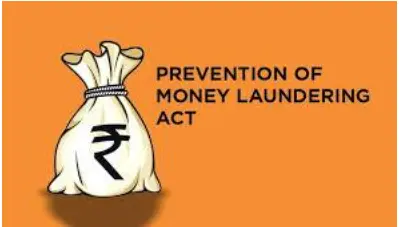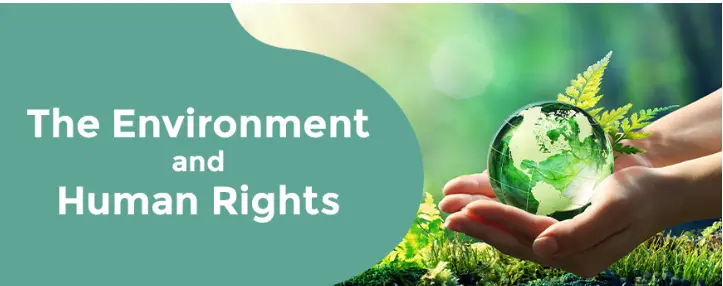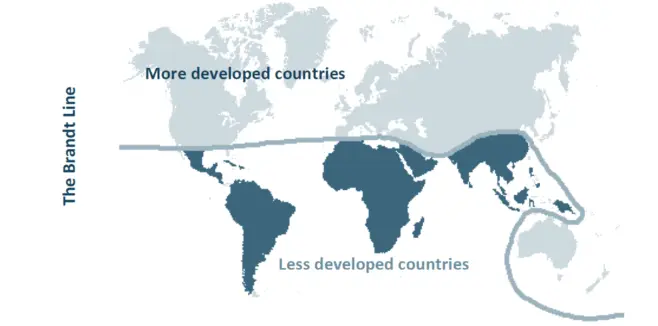Thursday, 11th April 2024
Earthquake in Taiwan
In News: One of the most significant earthquakes in at least 25 years, registering a magnitude of 7.4 on the Richter Scale, has hit Taiwan.
Causes of Earthquakes in Taiwan
- Location along the Pacific Ring of Fire: Taiwan's susceptibility to earthquakes is primarily due to its location along the Pacific Ring of Fire, where about 90% of the world's earthquakes occur.
- Tectonic Plate Interactions: The tension accumulated from the interactions of two tectonic plates, the Philippine Sea Plate and the Eurasian Plate, leads to sudden releases of energy in the form of earthquakes.
- Mountainous Landscape: Taiwan's mountainous terrain can amplify ground shaking during earthquakes, increasing the likelihood of landslides, particularly in areas near the epicenter.
- Landslide Effects: Landslides triggered by earthquakes, such as those on Taiwan's eastern coast, can exacerbate the impact by causing debris to hit tunnels and highways, resulting in casualties and infrastructure damage.
Overview of the Pacific Ring of Fire
- Definition and Characteristics: The Pacific Ring of Fire, also known as the Pacific rim or the Circum-Pacific Belt, is an area characterized by active volcanoes and frequent earthquakes, encompassing approximately 75% of the world's volcanoes and 90% of global seismic activity.
- Geographical Stretch: Extending over approximately 40,000 kilometers, the Ring of Fire follows the boundaries of several tectonic plates, including the Pacific, Juan de Fuca, Cocos, Indian-Australian, Nazca, American, and Philippine Plates. It spans along the western coasts of South and North America, crosses the Aleutian Islands in Alaska, runs along the eastern coast of Asia, and extends to the northern coast of Antarctica.
- Countries in the Ring of Fire: Various countries bordering the Pacific Ocean, including Indonesia, New Zealand, Papua New Guinea, the Philippines, Japan, the United States, Chile, Canada, Guatemala, Russia, Peru, the Solomon Islands, Mexico, and Antarctica, are situated within the Ring of Fire.
Causes of Volcanic Activity
- Tectonic Plate Movements: Volcanic activity in the Ring of Fire is primarily caused by tectonic plate movements, particularly subduction zones where one plate is pushed beneath another. This slow process results in the melting of rocks, which form magma that rises to the Earth's surface, leading to volcanic eruptions.
- Recent Research Findings: Scientists have observed that the cooling of the Pacific Plate, which drives much of the tectonic activity in the Ring of Fire, could alter plate boundaries and increase stress accumulation, potentially resulting in more frequent and stronger earthquakes. The cooling process affects younger parts of the plate more rapidly, particularly in its northern and western regions, which are the most active parts of the Ring of Fire.
Understanding Tsunamis
- Definition and Origin: Tsunamis, also known as harbor waves or killer waves, are not single waves but a series of ocean waves, typically caused by underwater earthquakes, volcanic eruptions, landslides, rapid changes in atmospheric pressure, or meteorite impacts.
- Occurrence within the Ring of Fire: About 80% of tsunamis occur within the Pacific Ocean's Ring of Fire, where tectonic shifts make earthquakes and volcanic activity common.
- Characteristics and Speed: Tsunamis can travel at speeds of up to 800 kilometers per hour, crossing the entire Pacific Ocean in less than a day. Due to their long wavelengths, they lose minimal energy as they propagate across the sea.
- Global Awareness: Recognizing the significant threat posed by tsunamis, the UN General Assembly designated November 5th as World Tsunami Awareness Day in December 2015, aiming to raise awareness and promote preparedness measures worldwide.
|
UPSC Previous Year Questions Prelims (2013) Q. Consider the following:
Which of the above are responsible for bringing dynamic changes on the surface of the earth? (a) 1, 2, 3 and 4 only Ans: (d) Mains (2021) Q. Discuss about the vulnerability of India to earthquake related hazards. Give examples including the salient features of major disasters caused by earthquakes in different parts of India during the last three decades. Mains (2014) Q. Why are the world’s fold mountain systems located along the margins of continents? Bring out the association between the global distribution of fold mountains and earthquakes and volcanoes. |
Source: IE
Hepatitis In India
In News: On April 9, the World Health Organization released the 2024 Global Hepatitis Report.
Overview of Hepatitis
Hepatitis is characterized by inflammation of the liver, often resulting from viral infections but also having other potential causes such as autoimmune reactions or exposure to certain substances.
Viral Classification and Treatment
- Hepatitis A: Caused by the hepatitis A virus (HAV), this type of hepatitis is acute and typically short-term. Treatment may not be necessary due to its transient nature.
- Hepatitis B: Hepatitis B virus (HBV) causes this form, often leading to a chronic condition. There's no specific treatment for acute cases.
- Hepatitis C: Resulting from the hepatitis C virus (HCV), this form commonly presents as a long-term condition. Antiviral medications are effective for both acute and chronic hepatitis C.
- Hepatitis D: A rare form occurring alongside hepatitis B infection, caused by the hepatitis D virus (HDV). Treatment with pegylated interferon alpha is recommended by the WHO, although it can have severe side effects.
- Hepatitis E: Resulting from exposure to the hepatitis E virus (HEV), typically through contaminated water in areas with poor sanitation. No specific medical therapies are available, as the infection often resolves on its own.
Causes of Hepatitis
- Infectious Causes: While most commonly due to viral infections, hepatitis can also result from exposure to alcohol, medications, drugs, or toxins.
- Non-Infectious Causes: Autoimmune reactions occur when the body's immune system mistakenly attacks liver tissue, leading to inflammation and impaired liver function.
Symptoms and Prevention
Common symptoms include fatigue, flu-like symptoms, abdominal pain, loss of appetite, and jaundice. Vaccines are available for hepatitis A, B, and D, while preventive measures include minimizing exposure to substances containing these viruses.
Global Hepatitis Report 2024
According to the World Health Organization's report, viral hepatitis is the second leading infectious cause of death globally, with 1.3 million deaths per year. The burden is primarily borne by countries such as Bangladesh, China, India, and Nigeria, with hepatitis B and C being the main contributors. In India, hepatitis cases have been on the rise, with low diagnosis coverage despite efforts such as vaccination programs.
Source: TH
Understanding Antimicrobial Resistance
In News: The Global Leaders Group (GLG) on Antimicrobial Resistance (AMR) published a report titled "Towards specific commitments and action in the response to antimicrobial resistance," in anticipation of an upcoming high-level meeting on AMR at the United Nations General Assembly.
Key Highlights of the 2024 Global Hepatitis Report
- Financing for Addressing Antimicrobial Resistance (AMR)
- The report stresses the importance of securing adequate, predictable, and sustainable financing from both domestic and external sources to combat AMR effectively.
- It proposes expanding existing financing mechanisms to encompass AMR and increasing investments to support the implementation of comprehensive National Action Plans, especially in low- and middle-income nations.
- Enhancing Data Quality and Surveillance
- The report underscores the necessity of improving the quality of data on AMR through robust surveillance and monitoring efforts.
- It recommends strengthening human resources and infrastructure capacity to facilitate more accurate data collection and analysis.
- Global Targets for Action
- The report proposes several global targets to drive action at the national level, including reducing deaths caused by bacterial AMR by 10% by 2030.
- It aims for at least 80% of overall human antibiotic consumption to comprise antibiotics from the ACCESS group, which are characterized by narrow spectrum, lower side-effects, and lower cost.
- Reduction of Antimicrobial Use in Agri-food Systems
- The report sets targets to reduce the number of antimicrobials used in agri-food systems globally by 30-50% by 2030.
- It also aims to eliminate the use of medically important antimicrobials for non-veterinary medical purposes in animals and crop production by 2030.
- National Target Development
- The Global Leaders Group (GLG) on Antimicrobial Resistance recommends that all countries formulate outcome-oriented, sector-specific targets with clear goals and timelines, and ensure their effective implementation.
Understanding Antimicrobial Resistance (AMR)
- Global Concerns
- AMR is a pressing global health issue, causing nearly 5 million deaths annually, with a significant impact on children under five.
- It directly caused 1.27 million deaths globally in 2019, contributing to 4.95 million deaths in total.
- Economic and Health Impacts
- Uncontrolled AMR is forecasted to lower life expectancy and incur substantial healthcare costs and economic losses.
- It is projected to lead to significant economic losses, with estimates suggesting up to USD 3.4 trillion in GDP losses per year by 2030.
- Definition and Drivers
- AMR occurs when bacteria, viruses, fungi, and parasites no longer respond to antimicrobial medicines, primarily due to misuse and overuse.
- Low- and middle-income countries are disproportionately affected by AMR, exacerbating health disparities.
Global Initiatives and Response
- One Health Approach
- This integrated approach involves collaboration across human health, animal health, and environmental sectors to optimize health outcomes for people, animals, and ecosystems.
- Global Action Plan (GAP) on Antimicrobial Resistance
- Adopted in 2015, this plan aims to combat AMR with a One Health approach.
- Quadripartite Joint Secretariat on Antimicrobial Resistance
- Collaboration between WHO, FAO, UNEP, and WOAH to coordinate a global response to AMR.
- High-level Meetings and Awareness Campaigns
- UN General Assembly resolutions and initiatives such as World AMR Awareness Week aim to address AMR at the global level and promote best practices in combating it.
|
UPSC Previous Year Questions Prelims (2019) Q. Which of the following are the reasons for the occurrence of multi-drug resistance in microbial pathogens in India?
Select the correct answer using the code given below. (a) 1 and 2 Ans: (b) Mains (2014) Q. Can overuse and free availability of antibiotics without Doctor’s prescription, be contributors to the emergence of drug-resistant diseases in India? What are the available mechanisms for monitoring and control? Critically discuss the various issues involved. |
Source: FAO
VVPAT Machine
In News: Shortly before the commencement of the first phase of voting on April 19, 2024, the Supreme Court declared its intention to address petitions calling for 100% verification of Voter Verified Paper Audit Trail (VVPAT) slips.
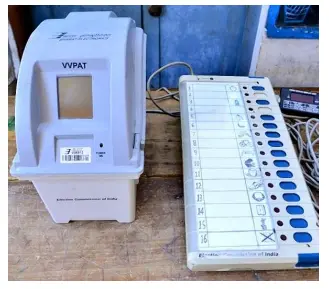
Overview of VVPAT Machine
- Definition: The Voter Verified Paper Audit Trail (VVPAT) machine is an attachment to the Electronic Voting Machine (EVM) that allows voters to visually verify the vote they cast by printing a slip of paper displaying their choice.
- Verification Process: The VVPAT machine prints a slip containing the candidate's details, which is briefly displayed behind a glass window for the voter's verification. The voter has 7 seconds to verify before the slip drops into a compartment below.
- Usage Restrictions: Voters are not permitted to take the VVPAT slip home, as it is utilized for verifying votes in five randomly selected polling booths.
- Purpose: The introduction of VVPAT aims to enhance trust in the voting process by enabling physical verification of electronically cast votes, thereby reassuring both voters and political parties about the accuracy of the votes.
Introduction and Development
- Proposal and Trials: The concept of VVPAT was initially suggested in 2010 during a meeting between the Election Commission of India (ECI) and political parties to enhance transparency in the EVM-based polling process. Field trials were conducted in various locations in July 2011, leading to the approval of VVPAT by an expert committee of the ECI in February 2013.
- Legislation: In 2013, amendments to the Conduct of Elections Rules, 1961 were made to permit the attachment of a printer with a drop box to the EVM. VVPAT was first used in all 21 polling stations of the Noksen Assembly constituency of Nagaland in 2013, with phased adoption decided by the ECI, reaching 100% adoption by June 2017.
Legal Framework and Supreme Court's Views
- Legal Mandate: In the Subramanian Swamy vs Election Commission of India Case, 2013, the Supreme Court mandated the use of VVPATs for transparent elections, compelling government funding for their implementation.
- Petition and Concerns: In 2019, a petition was filed in the Supreme Court requesting a minimum of 50% randomized counting of VVPAT slips. However, the Election Commission of India (ECI) raised concerns regarding challenges such as potential delays in declaring election results by 5-6 days and infrastructure limitations like manpower availability.
Source: IE
C-Dome
In News: For the first time, Israel deployed its ship-mounted defense system, known as the C-Dome.

Comparison of Iron Dome and C-Dome Missile Defense Systems**
Iron Dome Key Facts
- Developed by Rafael Advanced Defense Systems and Israel Aerospace Industries, becoming operational in March 2011.
- Capable of defending against short-range rockets, intercepting them in the air.
- Can successfully handle multiple rockets simultaneously.
- Employs a radar system to detect incoming rockets.
- Utilizes a command-and-control system to assess threat levels.
- Uses interceptor missiles to destroy incoming rockets.
- Operates in all-weather conditions, day or night.
- Offers the ability to launch a variety of interceptor missiles.
- Designed to intercept missiles with a range of about 40 miles or less.
- Can be deployed on land or sea to adapt to defense needs.
- Requires reloading to sustain continuous interception efforts.
C-Dome Features
- Naval version of Israel's Iron Dome air defense system, adapted for ships.
- Mounted on Sa’ar 6-class corvettes, German-made warships.
- Utilizes the same interceptor missile technology as the Iron Dome.
- Declared operational in November 2022.
- Integrated into the ship’s radar system for target detection.
- Provides full-circular vessel protection against a spectrum of modern threats.
- Offers high kill probability against maritime and coastal threats.
- Works similarly to the Iron Dome, using radar detection and interceptor missiles.
- Ensures defense against rocket and missile attacks at sea.
- Employs radars to detect short-range rockets before intercepting them.
- Offers vessel-mounted defense capabilities against aerial threats.
Source: NDTV
Higgs Boson
In News: Renowned British physicist Peter Higgs, Nobel Prize winner and the proposer of the mass-giving particle concept, famously known as the Higgs boson or the "God particle," has passed away at the age of 94.
Understanding the Higgs Boson
Definition and Discovery
- The Higgs boson is the fundamental force-carrying particle of the Higgs field, responsible for granting mass to fundamental particles.
- Proposed by Peter Higgs in the mid-1960s, the particle was discovered on July 4, 2012, by researchers at CERN's Large Hadron Collider (LHC) in Switzerland.
- Its discovery confirmed the existence of the Higgs field and completed the standard model of particle physics.
Characteristics
- The Higgs boson has a mass of 125 billion electron volts, making it 130 times more massive than a proton.
- It is chargeless with zero spin, unique among elementary particles.
- Referred to as the "God particle" due to its fundamental role in subatomic physics.
Boson Nature
- Bosons are "force carrier" particles exchanged during particle interactions.
- In quantum field theory, bosons can be described as waves in fields.
- The Higgs boson arises from the Higgs field's excitation and generates mass through its interactions with other particles.
Mechanism and Mass Granting
- The Higgs boson mediates the Brout-Englert-Higgs mechanism, granting mass to particles.
- Particles coupling more strongly with the Higgs field gain greater masses.
- The Higgs boson itself gains mass through its interaction with the Higgs field.
Exceptions and Limitations
- Photons, as basic particles of light, are not granted mass by the Higgs field due to spontaneous symmetry breaking.
- Mass-granting applies primarily to fundamental particles like electrons and quarks, while composite particles like protons derive mass from binding energy.
Source: NDTV
Section 451 of the Criminal Procedure Code
In News: The recent ruling by the Supreme Court emphasized that seeking relief from the High Court under Articles 226 or 227 of the Constitution for the release of a seized vehicle would not be considered a suitable remedy without first approaching the magistrate under Section 451 of the Code of Criminal Procedure (CrPC).
Understanding Section 451 of the Criminal Procedure Code (CrPC)
Overview
- Section 451 of the CrPC pertains to the interim custody and disposal of property pending trial in certain cases.
- It allows for the court to make orders regarding the custody and disposal of property produced before it during the
Key Provisions
- The section authorizes the court to order the custody of property pending conclusion of the inquiry and trial, considering the nature of the property and the need for speedy or natural decay.
- Property covered under this section includes any kind of property or document produced before the court or in its custody, or property associated with the commission of an offense.
- The court can issue interim orders for the proper custody and disposal of property based on its classification and urgency.
- Disposal methods include destruction, confiscation, returning to the rightful owner, selling, etc.
- Symbolic production of property is permitted through filing records or reports about the seizure.
Discretion and Revision
- The court exercises discretionary power in deciding the method of disposal based on the circumstances of the case.
- Orders under Section 451 are interlocutory and subject to revision depending on changing circumstances.
Related Topics
- Section 125 of the Criminal Procedure Code (CrPC)
- Section 91 of the Code of Criminal Procedure (CrPC)
- Section 82 of the Code of Criminal Procedure (CrPC)
- Section 319 of the Code of Criminal Procedure
Source: LL
Coordinated Lunar Time
In News: Recently, the US White House issued an official directive to the National Aeronautics and Space Administration (NASA) to establish a time standard specifically for the Moon.
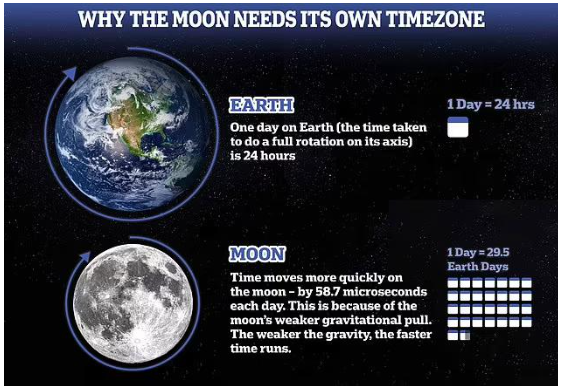
Coordinated Lunar Time (LTC) and Earth's Time Standard
Overview of Coordinated Lunar Time (LTC)
- LTC serves as a time-keeping benchmark for lunar spacecraft and satellites, ensuring precision for missions.
- It synchronizes communication between satellites, astronauts, bases, and Earth, essential for coordinating operations and managing lunar commerce logistics.
Need for LTC
- On the Moon, where gravity is weaker, time passes slightly faster relative to Earth, posing challenges for spacecraft docking, data transfer, communication, and navigation.
- Earth-based clocks on the Moon lose an average of 58.7 microseconds per Earth day, with additional periodic variations.
Functioning of Earth's Time Standard
- Coordinated Universal Time (UTC) is the international standard for world time, set by the International Bureau of Weights and Measures in Paris, France.
- UTC is determined by a weighted average of over 400 atomic clocks worldwide.
- Atomic clocks measure time based on the resonant frequencies of atoms like cesium-133, providing stable and accurate timekeeping.
- Countries adjust their local time relative to UTC by adding or subtracting hours based on their distance from the Greenwich meridian (0° longitude).
- Countries to the west of the Greenwich meridian subtract hours from UTC, while those to the east add hours.
Source: IE
Jenu Kuruba Community
In News: For decades, the indigenous Jenu Kuruba tribe, residing in the forests of the Western Ghats, faced systematic denial of their basic rights and were deprived of opportunities for development.
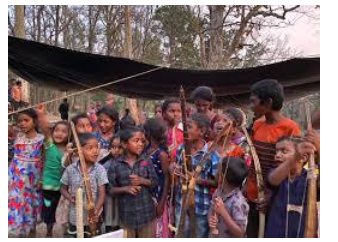
Overview of the Jenu Kuruba Community
- Meaning of Name
- "Jenu" in Kannada refers to honey, while "Kuruba" denotes the caste. Thus, the Jenu Kurubas are honey gatherers by occupation.
- Traditional Occupation
- The Jenu Kurubas are a traditional honey-gathering tribe, originally inhabiting the forests of the Western Ghats across Karnataka, Kerala, and Tamil Nadu.
- Their primary occupation involves gathering minor forest produce, particularly honey, in the forested regions.
- Settlements and Lifestyle
- They reside in small settlements known as Hadi.
- The community traditionally practices shifting cultivation, leading to a semi-nomadic lifestyle.
- Social Structure
- The Jenu Kurubas maintain a semi-nomadic social structure, not reliant on external authorities like rulers or religious institutions.
- Each settlement has its own leadership structure, typically consisting of a head-man (yajamana) and a ritual head or shaman (gudda).
Source: DH
International Narcotics Control Board
In News: India's Jagjit Pavadia has been re-elected for a third term, spanning five years from March 2025 to 2030, to serve on the International Narcotics Control Board.
International Narcotics Control Board (INCB)
Establishment and Purpose
Established in 1968, the INCB is an independent and quasi-judicial monitoring body tasked with overseeing the implementation of United Nations international drug control conventions.
Historical Background
The INCB was formed by merging two entities: the Permanent Central Narcotics Board, established by the 1925 International Opium Convention, and the Drug Supervisory Body, created by the 1931 Convention for Limiting the Manufacture and Regulating the Distribution of Narcotic Drugs.
Membership Composition
- Comprising 13 members, the INCB's members are elected by the Economic and Social Council and serve in their individual capacity, not as government representatives.
- Three members with medical, pharmacological, or pharmaceutical expertise are selected from a list nominated by the World Health Organization (WHO), while 10 members are chosen from a list nominated by governments.
Mandate
- The INCB collaborates with governments to ensure an adequate supply of drugs for medical and scientific purposes while preventing the diversion of drugs from licit sources to illicit channels.
- It monitors governments' control over chemicals used in the illicit production of drugs and assists in preventing the diversion of these chemicals into illegal trafficking.
Source: TH
Forging India's Journey Towards Inclusive Healthcare
In News: World Health Day, celebrated every year on April 7, serves as a poignant reminder of the significance of health equity, which the World Health Organization (WHO) has declared as a fundamental human right.
Understanding Health Equity and Its Scope
- Definition: Health equity, as defined by the WHO, entails ensuring that every individual has the opportunity to attain their highest level of health, irrespective of their social, economic, or environmental circumstances. It extends beyond mere access to healthcare services to encompass addressing underlying determinants of health disparities.
- Recognition of Health Outcomes: Health outcomes are influenced by various factors, including social, economic, and environmental determinants. Individuals from disadvantaged socioeconomic backgrounds often encounter barriers to healthcare access, such as financial constraints and limited availability of healthcare facilities.
Significance of Health Equity
- Moral and Public Health Perspective: Health equity is crucial not only from moral and ethical standpoints but also from a public health perspective. Research indicates that populations with greater health equity experience better overall health outcomes, lower healthcare costs, and increased life expectancy.
- Impact of Inequities: Persistent health inequities can lead to societal instability, economic burden, and diminished human potential.
Health Equity Challenges in India
- Urban-Rural Disparities: India faces significant healthcare access and outcome disparities between urban and rural areas, with rural communities often experiencing poorer health outcomes due to limited healthcare infrastructure and services.
- Overcrowded Urban Slums: Urban slums in India are characterized by extreme poverty, poor sanitation, and limited access to healthcare facilities, leading to higher morbidity and mortality rates among slum dwellers.
- Socioeconomic and Caste Disparities: Marginalized groups, including Scheduled Castes, Scheduled Tribes, and economically disadvantaged populations, experience higher rates of morbidity and mortality due to limited healthcare access and social discrimination.
- Burden of Non-Communicable Diseases (NCDs): NCDs pose a growing challenge to health equity in India, with limited access to preventive services and treatment exacerbating disparities in health outcomes.
- Shortage of Healthcare Professionals: A critical shortage of doctors, particularly in rural areas, hampers access to primary healthcare services, leading to delayed diagnosis and inadequate treatment.
- Infrastructure and Resource Constraints: Inadequate healthcare infrastructure, limited funding, and resource constraints pose significant challenges to health equity in India, with many public healthcare facilities lacking essential equipment and trained staff.
Solutions and Initiatives to Address Health Equity in India
- Strengthening Primary Healthcare: Improving the availability and accessibility of primary care facilities, enhancing the skills of frontline healthcare workers, and ensuring the provision of essential health services are key strategies.
- Promoting Universal Health Coverage: Initiatives like Ayushman Bharat aim to provide financial protection to vulnerable populations by offering cashless coverage for hospitalization expenses.
- Addressing Social Determinants of Health: Poverty alleviation, improving access to education and sanitation, and creating livelihood opportunities are essential for reducing health disparities.
- Promoting Health Literacy: Integrating health education into existing healthcare programs can enhance public awareness and promote preventive healthcare practices.
- Strengthening Collaborations: Effective collaboration among governments, civil society, healthcare providers, and international organizations is crucial for addressing health inequities.
Conclusion
Promoting health equity in India requires concerted efforts across multiple sectors and stakeholders. By addressing socioeconomic determinants of health, strengthening healthcare infrastructure, and fostering collaborative partnerships, India can ensure access to high-quality healthcare for all its citizens. Achieving health equity is essential for sustainable development and social progress.
Source: TH
Share the article
Edukemy’s Current Affairs Quiz is published with multiple choice questions for UPSC exams
MCQ
Get Latest Updates on Offers, Event dates, and free Mentorship sessions.

Get in touch with our Expert Academic Counsellors 👋
Frequently Asked Questions
UPSC Daily Current Affairs focuses on learning current events on a daily basis. An aspirant needs to study regular and updated information about current events, news, and relevant topics that are important for UPSC aspirants. It covers national and international affairs, government policies, socio-economic issues, science and technology advancements, and more.
UPSC Daily Current Affairs provides aspirants with a concise and comprehensive overview of the latest happenings and developments across various fields. It helps aspirants stay updated with current affairs and provides them with valuable insights and analysis, which are essential for answering questions in the UPSC examinations. It enhances their knowledge, analytical skills, and ability to connect current affairs with the UPSC syllabus.
UPSC Daily Current Affairs covers a wide range of topics, including politics, economics, science and technology, environment, social issues, governance, international relations, and more. It offers news summaries, in-depth analyses, editorials, opinion pieces, and relevant study materials. It also provides practice questions and quizzes to help aspirants test their understanding of current affairs.
Edukemy's UPSC Daily Current Affairs can be accessed through:
- UPSC Daily Current Affairs can be accessed through Current Affairs tab at the top of the Main Page of Edukemy.
- Edukemy Mobile app: The Daily Current Affairs can also be access through Edukemy Mobile App.
- Social media: Follow Edukemy’s official social media accounts or pages that provide UPSC Daily Current Affairs updates, including Facebook, Twitter, or Telegram channels.


